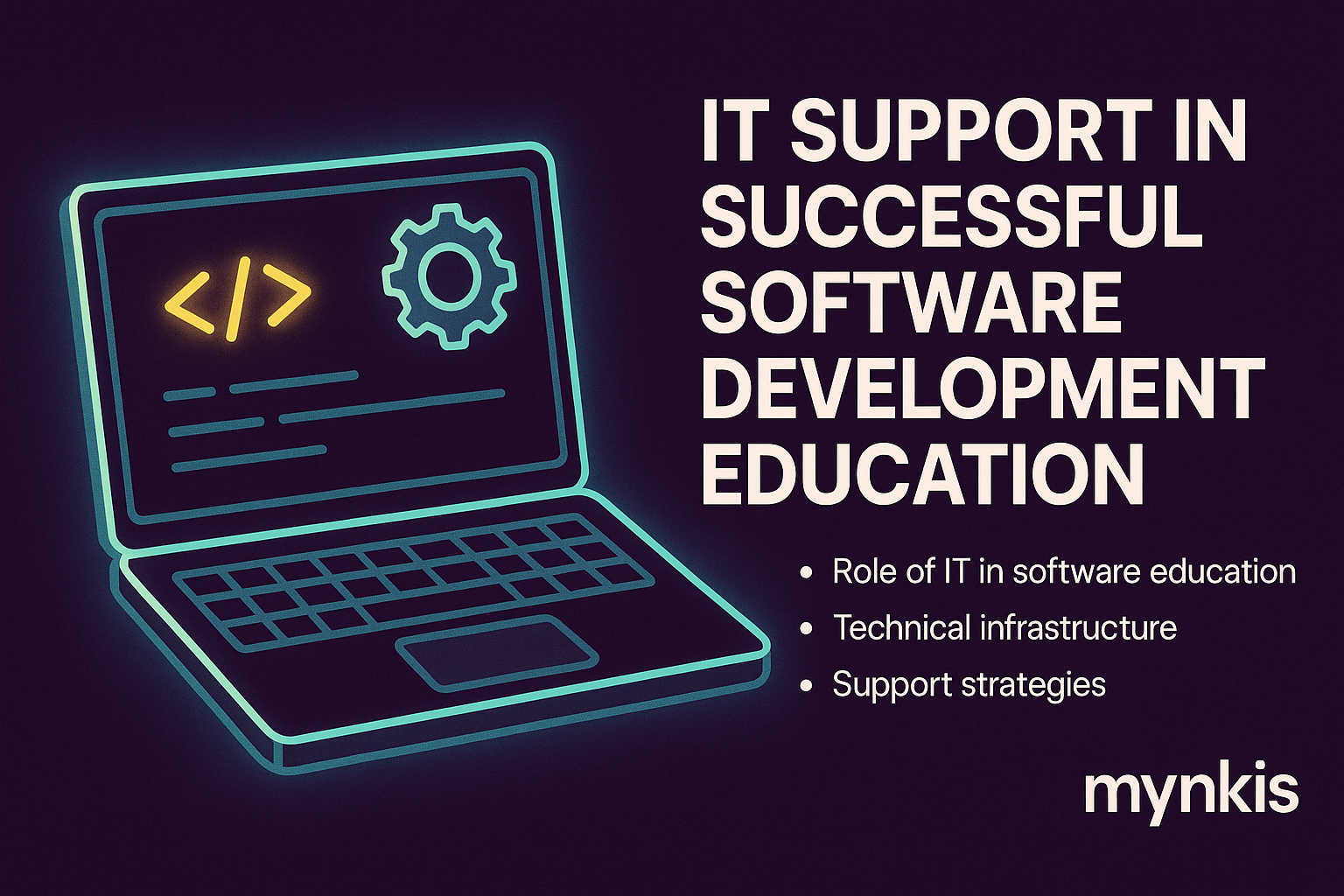Schedule a Demo
When embarking on software development projects, particularly for creating custom learning management systems and educational websites, the role of IT support cannot be overstated. From my experiences working closely with IT teams, I've seen how their efforts are crucial in keeping development on track and enabling smooth user experiences. Whether it's troubleshooting issues that arise mid-project or ensuring that the infrastructure can scale as needed, a robust IT support system is indispensable. In my work, I've noticed that when schools and universities engage with IT specialists early in the planning stages, the resulting software tends to be more resilient and better aligned with long-term institutional goals.
IT support in software development is a multifaceted arena, touching everything from coding and infrastructure to user training and cybersecurity. A developer might be adept at creating a sophisticated interface for a learning management system (LMS), but without solid IT support, there could be hidden vulnerabilities that undermine user trust and data security. I've worked on projects where the IT team's involvement was crucial in identifying and patching such risks, showcasing the importance of IT vigilance from the get-go.
One of the key responsibilities of IT support is to ensure the seamless integration of new software into existing ecosystems. Schools and universities often have a patchwork of systems already in place, from student information systems to staff directories. When developing a custom LMS, the ability of IT teams to integrate this new platform smoothly with the existing infrastructure is vital. I recall a project where we successfully incorporated a new learning system into the university's existing suite of tools, largely due to our IT support team's expertise in system integration.
Scalability is another critical aspect. As student numbers grow or new courses are introduced, the system needs to scale effortlessly. Here, IT support ensures the backend of the LMS can handle increased load and maintain high performance levels. In my dealings with various educational institutions, I've seen how IT support strategizes for scalability, often resulting in software that evolves with the institution over time.
Continuity of Service is perhaps one of the most overlooked yet essential roles of IT support in software development. For educators and students who rely on digital learning tools, any downtime can disrupt the learning process. I once worked on a project where we set up comprehensive backup and recovery protocols, supported by our IT team, to minimize any potential interruptions.
Moreover, IT support is pivotal in maintaining software quality. Through rigorous testing and quality assurance processes, IT teams help developers refine their work, ensuring that custom educational platforms meet the highest standards of usability and functionality. I've participated in testing phases where the meticulousness of our IT support transformed a good educational tool into an exceptional one.
Let's dive into the user experience (UX) aspect, which is crucial for the adoption of new educational software. IT support plays a key role in gathering feedback from users and relaying it to developers for continuous improvement. In my observations, the best outcomes occur when IT teams actively engage with students, faculty, and staff, turning their insights into actionable refinements of the software.
From a cybersecurity standpoint, IT support's role is even more pronounced. With educational data being a prime target for cyberattacks, robust IT measures are not just a luxury but a necessity. I've worked alongside IT specialists to implement stringent security protocols and conduct regular assessments to safeguard user data and privacy.
Training and Adoption are other realms where IT support is indispensable. Introducing new custom software to an educational institution requires comprehensive training programs for both educators and students. In every project, I've seen that effective IT support paves the way for seamless transitions and higher adoption rates. The training modules we've created, in collaboration with our IT team, have been instrumental in fostering user familiarity and confidence in using the new systems.
Moving from training to ongoing support, let's discuss how IT support continues to contribute even after the initial launch. In my experience, the ongoing availability of IT support is a critical factor in maintaining software functionality over time. Schools and universities that invest in robust IT support systems post-launch tend to experience fewer issues and have quicker resolutions when problems do arise.
We can't talk about IT support without touching on its impact on future-proofing. Educational institutions change and evolve, and so must their software solutions. I've seen how IT support helps with forecasting future needs and recommending upgrades or expansions to existing systems, ensuring that software remains relevant and useful to learners and educators alike.
To enhance efficiency, IT support teams often employ automation and AI tools. For instance, automated monitoring systems can detect system anomalies or performance issues well before they become problematic for users. In my dealings with these systems, the use of AI has streamlined processes, freeing up IT personnel to focus on more strategic tasks.
Collaboration between development and IT support is a dynamic interplay that, when done right, can significantly enhance the end product. I've been part of projects where regular meetings between developers and IT support personnel led to smoother workflows and higher-quality outcomes. Collaborative environments foster innovation and ensure that both teams are working towards the same goals for the software's success.
Finally, understanding the cost implications of IT support in software development cannot be understated. Yes, investing in solid IT infrastructure requires budget allocation, but it's a strategic decision that pays off in the long run. From reducing future maintenance costs to preventing potential cybersecurity breaches, the cost-saving measures facilitated by robust IT support are invaluable. Based on my observations across several educational projects, those institutions that emphasize strong IT support see their software investments provide greater returns over time.
